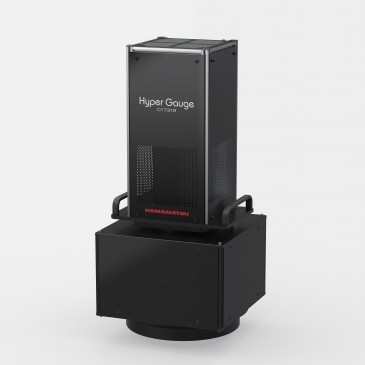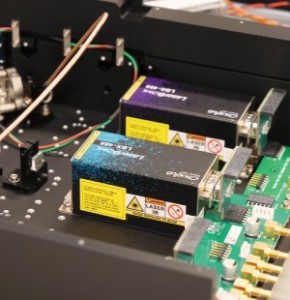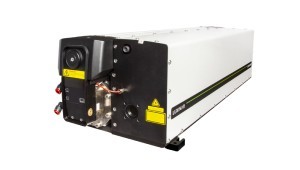
The UK Metamaterials Network connects academia, industry, governmental agencies and other professional bodies to enable the full implementation of fundamental science through to market-leading technology. The Network brings together experts from academia, industry, and governmental agencies to resolve interdisciplinary challenges for this exciting field of emerging materials from theory, fabrication, experiment, to large-scale manufacturing and field testing. It is a joint endeavour between the EPSRC UK Metamaterials Network led by Prof Alastair Hibbins and Dr Anja Roeding from the University of Exeter and the KTN Commercialising Metamaterials Innovation Network led by Dr Steve Morris and Dr Robert Quarshie from the Knowledge Transfer Network. Jose Pozo, EPIC's CTO, had a chance to interview Dr Anja Roeding to learn more about the important work of this organization.
Early career
After a year’s pre-university sabbatical working for the German Red Cross in a home for disabled people, in 2002, Anja went to the University of Düsseldorf to study a diploma in Social Sciences, Media Sciences, and Politics. At the end of her first year, unhappy with the university’s decision to convert the course into a Bachelor degree and wondering what to do with the degree in the end anyway, she did a four-month internship in the press department of the German Federal Parliament to get a taste of the “real world” in politics and media.
During the placement she observed a discussion a committee charged with evaluating and making recommendations on Germany’s embryo protection law. Discussions focused on the ethical implications of the science and research around human embryos, with particularly impressive input from a female professor in biosciences, who acted as an adviser to the committee. By the end of her internship, Anja had become so fascinated with the impact of science on politics and policy making that she decided to embark on a 5-year diploma in Biosciences at the Goethe University, Frankfurt.
The course covered a wide spectrum of biosciences, and in her final two years she specialised in microbiology, biochemistry, and genetics. She enjoyed every aspect of the course to the extent that after graduating in 2008, she spent the next five years doing a PhD in Biology at the same university.

Her research focused on structure/function relationships of light harvesting pigment-protein complexes in plants and algae. Inspired by the biosciences professor Anja observed during her time working for the German Parliament, she had originally intended to stay in academia and embark on a pathway to professorship herself. However, after five years of research, Anja learned that her strengths and interests lie in breadth, rather than in specialising in a specific field. This realisation, coupled with the scarcity of postdoc positions, she opted for a temporary contract as a Research Funding Administrator with the Hessian Ministry of Science and Art to gain insights in this particular side of the research environment, before taking a 1 year break to explore, live, and work on the other side of the world.
In August 2015, Anja moved to the UK, where she a short temporary job as Workload Planning Administrator at the University of Exeter enabled her to get a foot in the door of the Higher Education System in a new country. This was followed by two years as Project Manager, implementing and managing various projects for the College of Engineering, Mathematics and Physical Sciences. Then, in 2017 she became Manager of Exeter’s Centre for Doctoral Training in Metamaterials, which is led by Prof Alastair Hibbins, Professor in Metamaterial Physics. The CDT’s ambition is to provide postdoc students with facilities for metamaterials research and also expose them to industry so they could acquire transferable professional skills such as creative thinking, project management, and leadership.
Since then, Anja and Alastair have grown into an excellent team who drive forward Exeter’s vision for Metamaterials science, transforming the initial doctoral training centre investment into an internationally recognised 100 people strong research centre – the Centre for Metamaterials Research and Innovation.
Metamaterials
Metamaterials are a Technology Enabler. They are designed from conventional materials to engineer bespoke characteristics and functionality. This concept of function-through-structure is universally relevant to any application where control of information or energy is required.
Ground-breaking applications range from ultrafast and energy-efficient computing and electronics, to thinner, smaller, and lighter antennas; from holographic displays to lightweight, but extraordinarily strong materials; from noise control to high resolution imaging and enhanced sensing; from clean energy production to energy-efficient cooling.
As highlighted in the December 2010 edition of Science, metamaterials are “one of the 10 insights that have changed science since the dawn of the new millennium” owing to the fact that the geometry, arrangement and other properties of their constituent elements can be engineered to interact with electromagnetic or acoustic radiation in ways that no naturally occurring material can. This enhanced functionality makes them attractive for a wide range of applications in areas as diverse as energy harvesting, efficiency & storage, imaging, communications, electronic circuitry and sensing.
Historically, the UK has been a global leader in metamaterials, with its roots in the work of radar engineers in the 2nd World War. Since then, prodigious research by some of the UK’s most eminent academics, including Professor Sir John Pendry, has positioned the UK third in the world after China and the US for papers on metamaterials, and fifth for patents.
However, in recent years, academia, governmental agencies and industry had become concerned that the UK risked falling behind the curve - as it had done with semiconductors in the 1990s and gallium nitride LEDs in the early 2000s. Of particular alarm was China’s development of the world’s first large-scale metamaterial fabrication facility, with has capacity to produce 100,000 m² of metamaterial plates annually, with projects relating to aerospace, communication, satellite and military applications.
UK Metamaterials Network
Accordingly, after consulting with contacts in industry and fellow academics, Anja and Alastair put together a successful funding proposal to the UK government to launch a national metamaterial network. The key aim was to bring all the capabilities across the UK together under one umbrella to create a vibrant, multidisciplinary community to accelerate novel and innovative metamaterials research and commercialisation of the technology. In so doing, the network would secure and strengthen the UK’s sovereign capability and prosperity in this crucial scientific area.
Established in 2020 with Alastair and Anja as Directors, the UK Metamaterials Network is currently organised around Special Interest Groups (SIGs) and Forums.
SIGs: The SIGs are subdivided into 6 metamaterial specific groups for acoustic, flexible, mechanical, nanophotonic & plasmonic, active, and wireless & microwave metamaterials. The principal function of each SIG is to provide a forum for researchers, practitioners and end-users covering analysis, modelling, design and validation, across all possible applications of the metamaterial in question.
There is also a SIG for manufacturing and scaling-up, especially from lab to industry, which aims to support more effective transfer of knowledge from metamaterials researchers to industrial manufacturing, and to attract new manufacturing-focused academics and industrialists into the metamaterials community.
Finally, the modelling and AI-design SIG aims to identify strengths and limitations of the different metamaterials models and to establish clear guidelines for uses of different modelling approaches.
Forums: The Forums cover four key areas: 1) training the next generation of researchers working on metamaterials, and facilitating collaboration, networking, and creating bridges across disciplines; 2) identifying emerging concepts and disruptive opportunities in metamaterial science and engineering; 3) facilitating the transition from research into industrial applications and upskilling industrial staff; and 4) education activities and production of demonstrators and videos to promote the aims of the Network and its technologies.
Since its website launch in March 2021, , the UK Metamaterials Network has attracted 314 members including 229 from academia, 15 research organisations, 11 governmental organisations and 3 funding bodies in its expert database. But of particular importance are the 51 members from industry, who comprise not only start-ups and SMEs but also representatives from the R & D departments of big players like MBDA the pan-European missile systems company, PepsiCo, British Telecom, BAE Systems and General Electric as well as Sumitomo Chemical, a major Japanese chemical company. The fact that these types of companies have bought into the Network’s mission is an important achievement because a strong industrial membership will be key for scaling up manufacturing and attracting new manufacturing-focused academics and industrialists into the metamaterials community.
The future
Anja’s vision is that metamaterials will significantly drive the landscape over the next 5-10 years across multiple sectors including optical communications, wave guide systems, colour filters, security labelling, biomedical imaging, health care, defence and security. If this sounds like hype, it’s meant to, because in Anja’s view, hype is a good starting strategy as it will provide the project with initial energy and momentum, which the Network can build on and hopefully achieve success.
At a more practical level, over the next five years, the Network wants to showcase various success stories that demonstrate the potential of metamaterials to save money, drive new manufacturing capabilities and employment in the UK and to make a positive impact on society, for example, by reducing energy consumption. To this end, they are preparing videos, demonstrators and various case studies, to show companies how they can access metamaterials and benefit from the technology.
These dissemination tools will be used as part of broader communication strategy involving social media, the Network’s website, webinars, industry-academia workshops, and other dissemination events to increase awareness of the benefits of metamaterials and to promote the Network’s key messages.
The aim is to target the Network’s own members to inform and encourage synergies between the SIGs and Forums, and also to reach out to the wider metamaterials community in order to attract new members, especially new companies who are technologically ready to use metamaterials but unaware of the benefits of the technology. To help achieve this, the Network has joined industry associations like EPIC, where membership has enabled them to take advantage of the Consortium’s wide range of dissemination events and opportunities for networking among their 700+ members.
If you started again, what would you do differently?
“I wouldn't change a thing. My pathway is far from straight forward, and will hopefully continue to meander and bring new challenges and adventures into my life. With hindsight, I can see an underlying current in my work: connecting people, communicating complex ideas, and building bridges between different cultures and levels of understanding. It wasn’t always easy: not having a clear career goal and not knowing what's coming next can be a difficult and stressful time. But I’ve learnt a lot and I wouldn't trade the personal growth and challenges I’ve gone through for anything.”
What’s your advice for the generation of entrepreneurs?
“Firstly, speak to people as early as possible and don't be afraid of criticism. Get a mentor or multiple mentors and be open to input and ideas from other people. You may have a really brilliant idea, but you need to know the market and the competition.
“Secondly, network as much as you can to meet new people in the industry and get to know the challenges and potential collaborators who will support your ideas.
“Thirdly, don’t let your ego get in the way or be too hard on yourself when there's a critical comment or a challenging question - that’s all part of personal growth, innovation and letting your great ideas to actually come to fruition. “
Written by Jose Pozo, Chief Technology Officer at EPIC (European Photonics Industry Consortium).






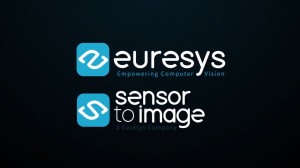






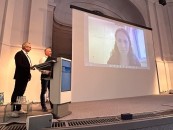

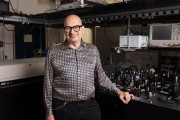



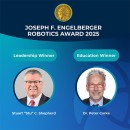
















 Back to Features
Back to Features